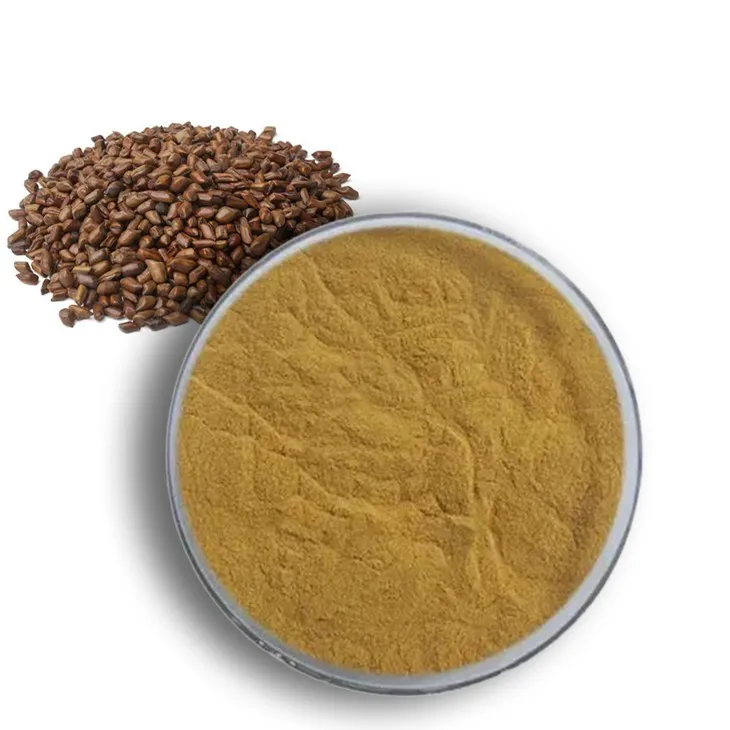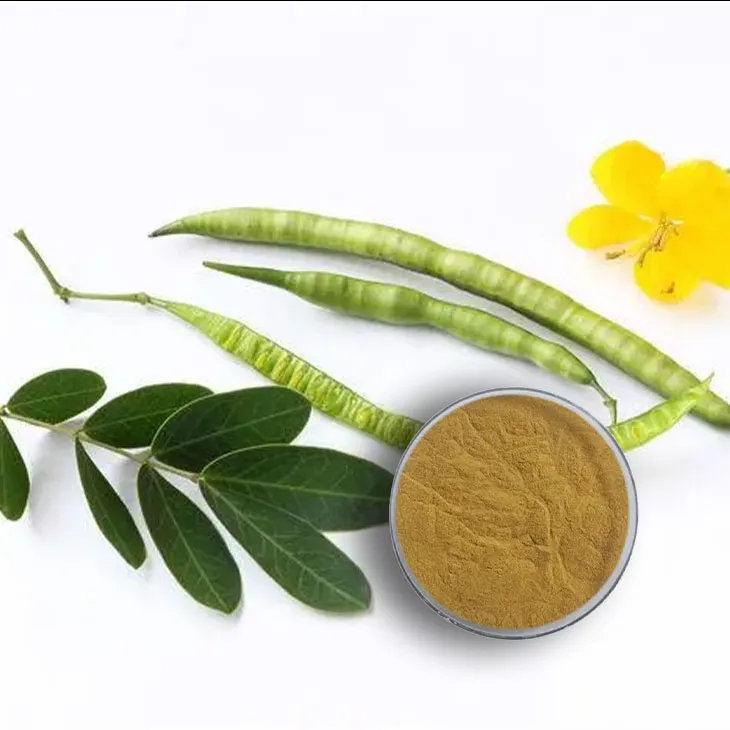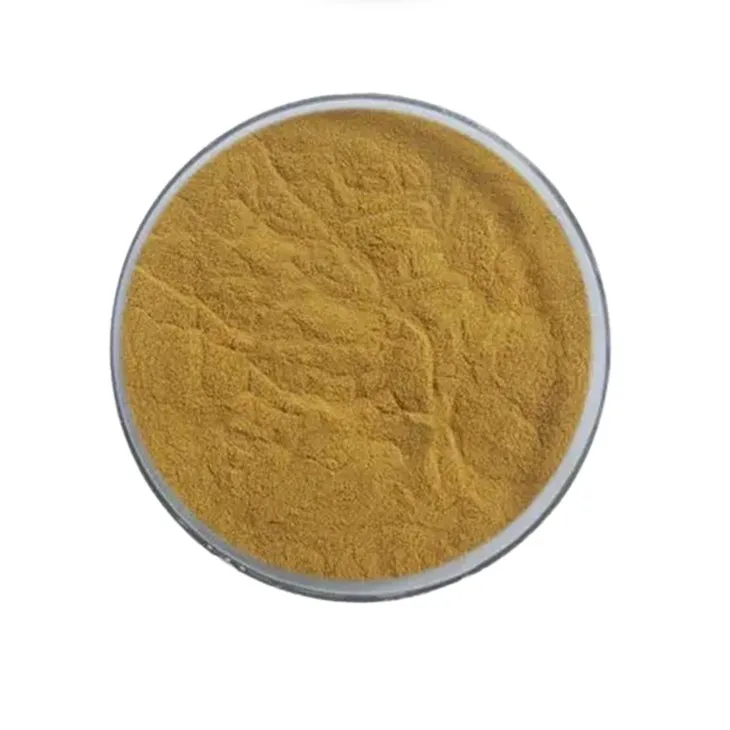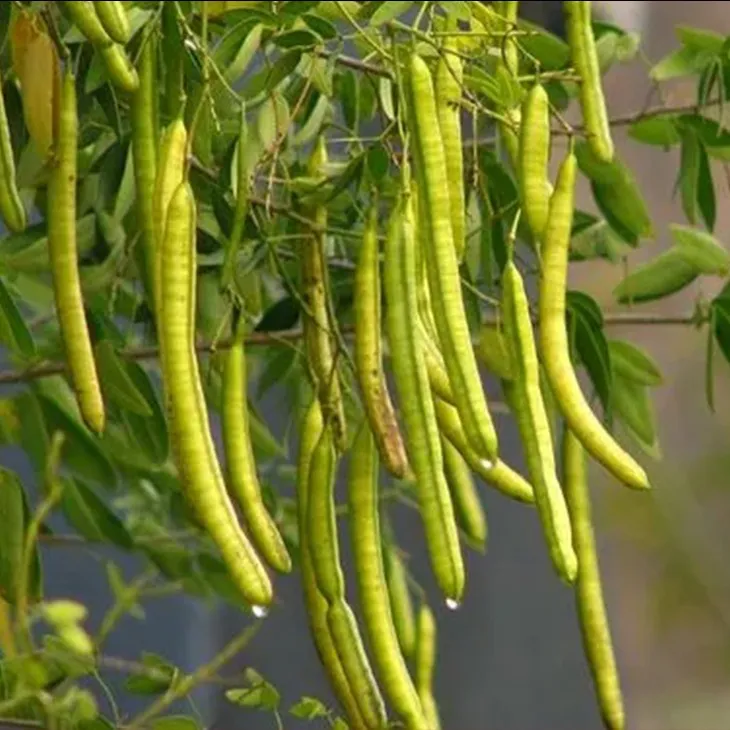- 0086-571-85302990
- sales@greenskybio.com
Extract Cassia Seed Extract by Steam Distillation.
2024-11-29

1. Introduction
Cassia seed, a renowned traditional material in many cultures, has been used for centuries in traditional medicine and various applications. The extraction of valuable substances from cassia seeds has become an area of great interest, and steam distillation is one of the effective methods to obtain the precious extract. This article aims to explore in depth the process of steam distilling Cassia Seed Extract, including the underlying principles, the unique characteristics of the extract, and its potential applications in different industries.

2. The Principle of Steam Distillation for Cassia Seeds
2.1 Volatility of Components
Steam distillation is based on the principle that certain components in the cassia seeds have different volatilities. The cassia seed contains a variety of organic compounds, some of which are volatile. When steam is passed through the ground cassia seeds, the volatile components in the seeds will vaporize along with the steam. This is because the vapor pressure of these volatile compounds is significant enough to be carried away by the steam. For example, essential oils present in the cassia seeds, which are responsible for their characteristic aroma and many of their bioactive properties, are relatively volatile and can be effectively extracted by steam distillation.
2.2 Immiscibility of Water and Volatile Compounds
Another important principle is the immiscibility of water (from the steam) and the volatile compounds in the Cassia Seed Extract. Although the volatile components vaporize with the steam, they do not dissolve completely in water. As a result, when the steam - volatile compound mixture is cooled down, two separate phases are formed. The water phase can be easily separated from the oil - rich phase containing the valuable Cassia Seed Extract. This property allows for the efficient isolation of the extract from the distillation mixture.
3. The Unique Properties of Cassia Seed Extract Obtained by Steam Distillation
3.1 Aromatic Profile
The extract obtained by steam distillation has a distinct and pleasant aromatic profile. The volatile compounds responsible for the aroma are carefully preserved during the distillation process. The characteristic smell of cassia seed extract can be described as warm, spicy, and slightly sweet. This unique aroma makes it a valuable ingredient in the perfume and fragrance industries. It can add a natural, earthy note to perfumes, colognes, and scented products, appealing to consumers who prefer natural - based fragrances.
3.2 Bioactive Compounds
Cassia seed extract contains a rich array of bioactive compounds. These include phenolic compounds, flavonoids, and terpenes, among others. The steam distillation process helps to retain these bioactive substances, which are known for their various health - promoting properties. For instance, phenolic compounds have antioxidant activity, which can help in neutralizing free radicals in the body, reducing the risk of oxidative stress - related diseases. Flavonoids are also associated with anti - inflammatory and anti - microbial effects. The presence of these bioactive compounds in the extract makes it a potential candidate for use in the pharmaceutical and nutraceutical industries.
3.3 Chemical Stability
The extract obtained through steam distillation generally exhibits good chemical stability. Since the process is relatively gentle compared to some other extraction methods, the chemical structure of the compounds in the extract is less likely to be damaged. This stability is crucial for its long - term storage and use in different applications. For example, in the cosmetic industry, where products may have a long shelf - life, the stable nature of the cassia seed extract ensures that its beneficial properties are maintained over time.
4. The Potential in Various Industries
4.1 Pharmaceutical Industry
In the pharmaceutical industry, cassia seed extract has several potential applications. Its bioactive compounds can be further studied and developed into new drugs or used as complementary therapies. For example, the antioxidant properties of the extract could be explored for the treatment of diseases related to oxidative damage, such as neurodegenerative diseases. Additionally, the anti - inflammatory effects of the flavonoids in the extract may be beneficial in treating inflammatory conditions like arthritis.- The extract can be formulated into tablets, capsules, or liquid medications.
- It may also be used in topical preparations for skin disorders due to its anti - microbial properties.
4.2 Nutraceutical Industry
As a rich source of bioactive compounds, cassia seed extract is highly suitable for the nutraceutical industry. It can be incorporated into dietary supplements, functional foods, and beverages.- For dietary supplements, the extract can be combined with other nutrients to enhance overall health benefits.
- In functional foods, it can be added to products like cereals, bars, or yogurts to provide an extra boost of antioxidants and other beneficial substances.
- When used in beverages, such as herbal teas or fruit juices, it can add a unique flavor and health - promoting properties.
4.3 Cosmetic Industry
The cosmetic industry can also benefit from cassia seed extract. Its aromatic profile makes it an attractive ingredient in perfumes, colognes, and body sprays. Moreover, the bioactive compounds in the extract offer various skin - friendly properties.- It can be used in skin creams and lotions for its antioxidant and anti - inflammatory effects, which can help in reducing wrinkles, improving skin elasticity, and protecting against environmental damage.
- In hair care products, the extract may be beneficial for promoting hair growth and maintaining healthy hair due to its nutrient - rich composition.
4.4 Food Industry
In the food industry, cassia seed extract can be used as a natural flavoring agent. Its unique taste can enhance the flavor of various food products.- It can be added to baked goods like cakes, cookies, and bread to impart a warm, spicy flavor.

5. The Steam Distillation Process in Detail
5.1 Preparation of Cassia Seeds
The first step in the steam distillation of cassia seed extract is the proper preparation of the cassia seeds. The seeds should be clean and free from any impurities. They are usually washed thoroughly and dried before the distillation process. Drying is an important step as it helps to remove excess moisture, which could interfere with the distillation process. Once dried, the seeds may be ground into a fine powder to increase the surface area for better interaction with the steam.
5.2 Setup of the Steam Distillation Apparatus
A typical steam distillation apparatus consists of a steam generator, a distillation flask containing the cassia seeds, a condenser, and a collection vessel. The steam generator produces steam, which is then passed into the distillation flask. The condenser cools the steam - volatile compound mixture, causing it to condense back into liquid form. The collection vessel is used to collect the distillate, which contains the cassia seed extract.- Connect all the components of the apparatus properly, ensuring there are no leaks.
- Check the pressure and temperature control mechanisms to ensure they are functioning correctly.
5.3 The Distillation Process
Once the apparatus is set up, the distillation process can begin. Steam is slowly introduced into the distillation flask containing the cassia seeds. The volatile components in the seeds start to vaporize and are carried along with the steam. The steam - volatile compound mixture then passes through the condenser, where it is cooled and condensed. The condensed liquid, which is a mixture of water and the cassia seed extract, is collected in the collection vessel.- The distillation process may take several hours, depending on the amount of cassia seeds and the desired yield of the extract.
- During the process, the temperature and pressure should be monitored carefully to ensure optimal extraction.
5.4 Separation and Purification of the Extract
After the distillation, the collected liquid contains both water and the cassia seed extract. Since the two are immiscible, they can be separated using a separating funnel. The water phase is drained off, leaving the oil - rich phase containing the extract. However, further purification may be required to remove any remaining impurities. This can be achieved through methods such as filtration or chromatography.- Filtration can remove solid particles from the extract.
- Chromatography can be used to separate different components of the extract based on their chemical properties.
6. Challenges and Future Perspectives
6.1 Challenges
Despite the potential of cassia seed extract obtained by steam distillation, there are several challenges. One of the main challenges is the optimization of the extraction process. Achieving a high yield of the extract while maintaining the quality of the bioactive compounds can be difficult. For example, if the distillation temperature is too high, it may lead to the degradation of some of the sensitive bioactive compounds. Another challenge is the standardization of the extract. Different batches of cassia seeds may vary in their composition, which can result in differences in the quality and properties of the extract.- There is also a need for more research on the long - term stability of the extract in different formulations and storage conditions.
- The cost - effectiveness of the extraction process also needs to be improved, especially for large - scale production.
6.2 Future Perspectives
Looking ahead, there are several opportunities for the development of cassia seed extract. With the increasing demand for natural and sustainable products, cassia seed extract has the potential to gain more attention in various industries.- Advances in extraction technology may lead to more efficient and environmentally friendly methods of steam distillation, such as the use of microwave - assisted steam distillation, which could improve the yield and quality of the extract.
- Further research on the bioactive compounds in the extract may uncover new applications in medicine, cosmetics, and other fields.
- The development of standardized protocols for the extraction and quality control of the extract will also be crucial for its commercialization and wider acceptance.
7. Conclusion
Cassia seed extract obtained by steam distillation holds great promise in various industries due to its unique properties. The understanding of the principle behind steam distillation, the properties of the extract, and its potential applications is essential for its further development. While there are challenges in the extraction process, future research and technological advancements are likely to overcome these obstacles, paving the way for the wider use of cassia seed extract in different sectors.
FAQ:
1. What is the principle of steam distillation for cassia seeds?
Steam distillation for cassia seeds is based on the fact that the volatile components in cassia seeds have different vapor pressures from the non - volatile ones. When steam is passed through the cassia seeds, the volatile compounds vaporize along with the steam. Since the vapor pressure of the mixture of steam and volatile compounds is different from that of the surrounding environment, they can be separated and condensed, thus obtaining the cassia seed extract.
2. What are the unique properties of the cassia seed extract obtained by steam distillation?
The extract often has a characteristic aroma due to the presence of certain volatile compounds. It may also possess antioxidant properties which can help in preventing oxidative damage. Additionally, it may have antimicrobial properties that can be useful in various applications such as in the food and pharmaceutical industries.
3. In which industries can the cassia seed extract obtained by steam distillation be potentially used?
The extract can be potentially used in the food industry as a natural flavoring agent or preservative. In the pharmaceutical industry, it may be used for its potential health - promoting properties. It can also find applications in the cosmetic industry for its aroma and potential skin - beneficial properties.
4. What are the steps involved in the steam distillation process of cassia seeds?
First, the cassia seeds are ground or crushed to increase the surface area. Then, steam is introduced into the container with the cassia seeds. The steam - volatile compound mixture rises and is then led into a condenser. In the condenser, the mixture is cooled and condensed back into a liquid. The liquid is then collected and further separated if necessary to obtain the pure cassia seed extract.
5. How to ensure the quality of the cassia seed extract obtained by steam distillation?
To ensure the quality, the source of cassia seeds should be carefully selected, ensuring they are of high quality and free from contaminants. The steam distillation process should be carried out under optimal conditions, such as appropriate temperature and pressure. Regular quality control checks should be done during the process, including analysis of the chemical composition and purity of the extract.
Related literature
- Title: Steam Distillation of Botanical Extracts: A Comprehensive Review"
- Title: "Cassia Seed: Chemical Composition and Its Extracts in Health and Industry"
- Title: "The Role of Steam - Distilled Extracts in Modern Pharmacology"
- ▶ Hesperidin
- ▶ citrus bioflavonoids
- ▶ plant extract
- ▶ lycopene
- ▶ Diosmin
- ▶ Grape seed extract
- ▶ Sea buckthorn Juice Powder
- ▶ Beetroot powder
- ▶ Hops Extract
- ▶ Artichoke Extract
- ▶ Reishi mushroom extract
- ▶ Astaxanthin
- ▶ Green Tea Extract
- ▶ Curcumin Extract
- ▶ Horse Chestnut Extract
- ▶ Other Problems
- ▶ Boswellia Serrata Extract
- ▶ Resveratrol Extract
- ▶ Marigold Extract
- ▶ Grape Leaf Extract
- ▶ blog3
- ▶ blog4
-
100% Organic Baicalin.
2024-11-29
-
Chinese Cocoa Extract Powder Manufacturers
2024-11-29
-
Chinese peppermint oil powder manufacturers.
2024-11-29
-
L - Tyrosine Manufacturers from China.
2024-11-29
-
The Optimal Method for Extracting Diosmin.
2024-11-29
-
Scutellaria Extract
2024-11-29
-
Chia Seed Powder
2024-11-29
-
melatonin extract
2024-11-29
-
Artichoke Extract
2024-11-29
-
Red Date Extract
2024-11-29
-
Peppermint Oil
2024-11-29
-
Feverfew Extract
2024-11-29
-
Hericium erinaceus extract powder
2024-11-29
-
Curcuma Longa Extract
2024-11-29
-
Europen Bilberry Extract
2024-11-29





















